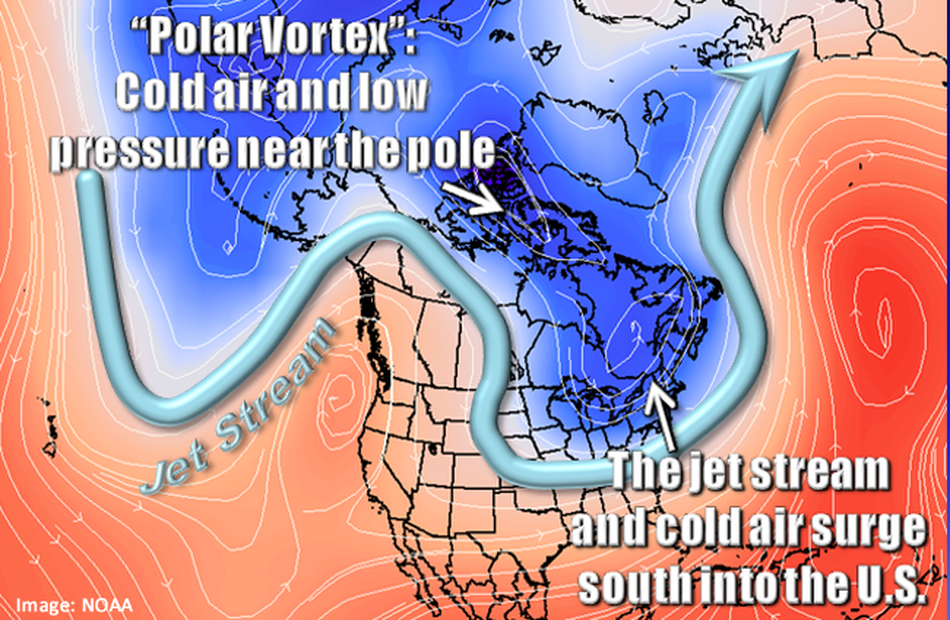Welcome back, old friend.
The polar vortex, composed of lofty winds that circulate atop the globe each winter, largely stayed put in the Arctic last year. But in 2021 the winds have weakened, allowing frigid air to spill out of the polar regions. A blast of Arctic air is now destined for a large swath of the U.S. beginning by week’s end.
“The whole Midwest is going to be in the grips of this swaying polar vortex,” said Jeff Weber, a research meteorologist at the University Corporation for Atmospheric Research. “This is air coming straight out of the pole.”
Early next week, many parts of the Midwest will see subzero temperatures, and the epicenter of the extreme weather event, Minnesota, will see lows of around -25 degrees Fahrenheit, said Weber. Monday is predicted to be the coldest day.
Overall, temperatures in much of the U.S. are expected to be colder than usual through at least much of next week.
For Alaska and the Lower 48, the CPC 6-10 Day forecast has 92% of the area painted in shades of blue for Below Normal temperatures. Looking at all 6-10 Day Outlooks issued over the last decade, this is the bluest map of all of them. Previous record was 86.8% on Feb 11, 2013. pic.twitter.com/DPl8gfPugO
— Brian Brettschneider (@Climatologist49) February 2, 2021
About every other year (or six times a decade), events in the atmosphere disrupt the polar vortex — though atmospheric scientists are still assessing what threw the vortex off-kilter in 2021. These weather events, like the streaming flows of air traveling around the world, can run into the polar vortex like “waves crashing on the beach.” This disrupts the vortex’s tightly wound winds, which weakens them. It’s like someone nudging a spinning top so it starts to wobble, Amy Butler, a research physicist at the National Oceanic and Atmospheric Administration Chemical Sciences Laboratory, told Mashable in January.
In the wobbly, weakened vortex, winds slow down. Sometimes, the winds in the disrupted vortex slow down a lot and start sinking, stoking a relatively normal event with a dramatic sounding name. It’s called “sudden stratospheric warming” (because the air warms as it sinks).
Importantly, these sinking winds push the jet stream — a powerful band of winds that, like a barrier, separates cold northern air from warmer southern air — down lower (shown in the graphic below). This means cold Arctic air can swoosh down into the U.S., like it’s now about to in 2021.
“The gates opened.”
“The gates opened,” said Andrea Lang, an atmospheric scientist at the University of Albany.
Sudden stratospheric warming events make it twice as likely for North America to experience such cold, Arctic blasts during the winter, explained Lang.

A disrupted polar vortex nudging the jet stream south.
Image: nws / noaa
In some places this February, unusually cold temperatures may persist for some two weeks, or perhaps even longer, said Weber.
Although winter invariably occurs each year — with the potential for these potent Arctic blasts — overall Earth’s climate is relentlessly warming as carbon dioxide levels skyrocket in the atmosphere. That’s why, for example, high daily temperature records dominate low records by a rate of about two to one.
See Also: The guardians of Wikipedia’s climate page
Our planet’s chaotic atmosphere will always be wildly dynamic, with cold extremes existing within a heating world.
